Ancient woodworking practices from various civilizations unveil their ingenuity, craftsmanship, and insights into daily life, technological advancements, and artistic sensibilities. From Egyptian joinery techniques to Roman innovations, each culture's approach offers a unique perspective.
Ancient Egyptian Woodworking
Ancient Egyptians crafted wooden furnishings—beds, chairs, stools, tables, and chests—preserved in tombs due to the dry climate. They excelled in veneering, gluing thin wood slices together for strength and beauty. The tomb of Semerkhet contains the oldest veneering examples, and ivory-inlaid ebony veneers adorned pharaohs' tombs.
Egyptian finishing techniques added protective layers, preserving intricate details for millennia. Their toolkit included:
- Stone and metal axes
- Adzes
- Chisels
- Saws
- The bow drill for precise holes
Mortise and tenon joints, strengthened with pegs and leather lashings, showcased ingenuity, while animal glue ensured durability.
Deforestation led Egyptians to import woods like cedar, pine, boxwood, and oak, with prized ebony from colonies. They innovated plywood, with a third-dynasty coffin featuring six layered, pegged sheets, underscoring their advanced techniques and allowing modern appreciation of their artistry.
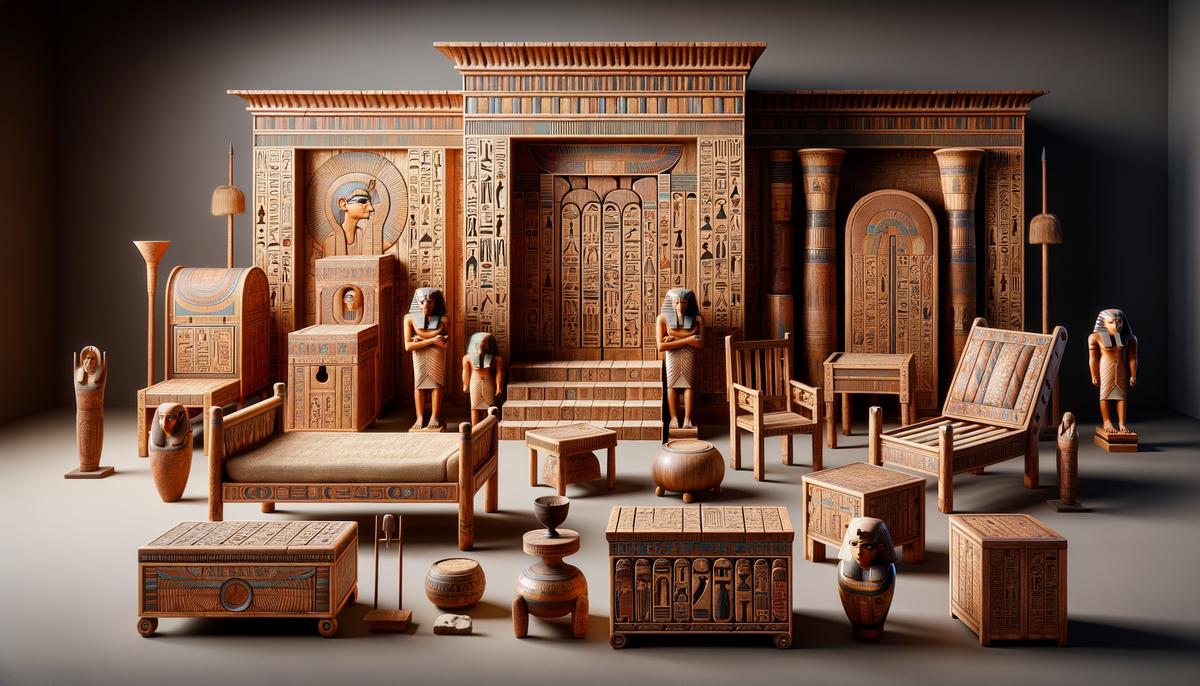
Roman Woodworking Innovations
The Roman Empire revolutionized woodworking through innovative tools like the frame saw, with a narrow blade held taut in a wooden frame for controlled, precise cutting. The reinforced stiffened back saw enabled straight cuts through dense woods.
The auger, with a spoon-shaped bit and cross-handle, streamlined drilling larger, deeper holes more efficiently than bow drills. Woods like ilex, beech, maple, elm, olive, ash, and the prized thyine from North Africa adorned luxury furniture and decor.
Roman carpenters constructed aqueducts, warships, residential architecture, and ornate furniture distinguished by carvings inspired by mythology and nature. Their diverse projects, from formidable military engineering to delicate furniture-making, highlight a spectrum of innovation and aesthetic sensibility influencing later generations.
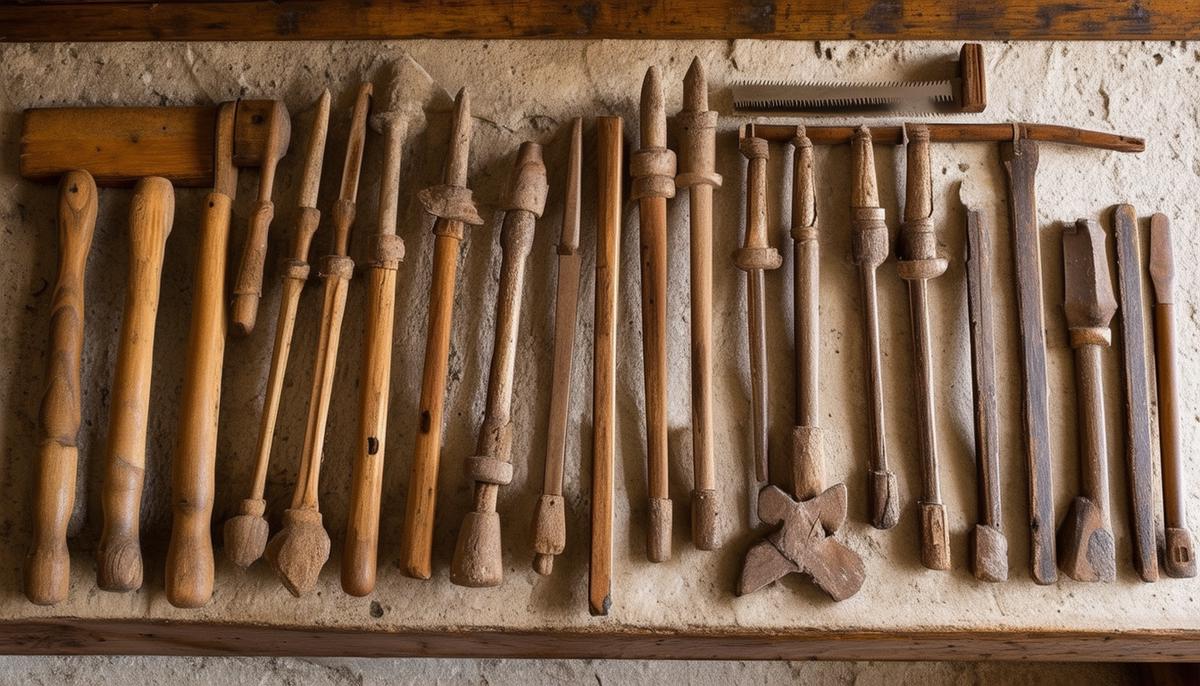
Medieval Carpentry Techniques
Carpenters were vital in medieval society, creating structures, furniture, and tools with masterful craftsmanship governed by stringent guilds. These guilds protected members, ensured quality, and provided robust education through apprenticeships.
Medieval tools were simple yet ingenious, like:
- Broadaxes for shaping beams
- Planes for smoothing
- Saws for precision cuts
- Drawknives for shaving wood
- Gimlets and augers for boring holes essential for joinery
Wood was indispensable for construction, from cathedrals to cottages, with framing, roofing, and flooring relying on timber. Joinery techniques like mortise and tenon joints ensured durability without modern adhesives.
Timber-framed houses featured complex trusses allowing open interior spaces, showcasing carpenters' prowess through paneling and carved details. Even castles required extensive woodwork.
Carpenters infused furniture with artistry, creating ornately carved chests, tables, and chairs rich in symbolic value. Their legacy laid the groundwork for modern practices as woodworking evolved.
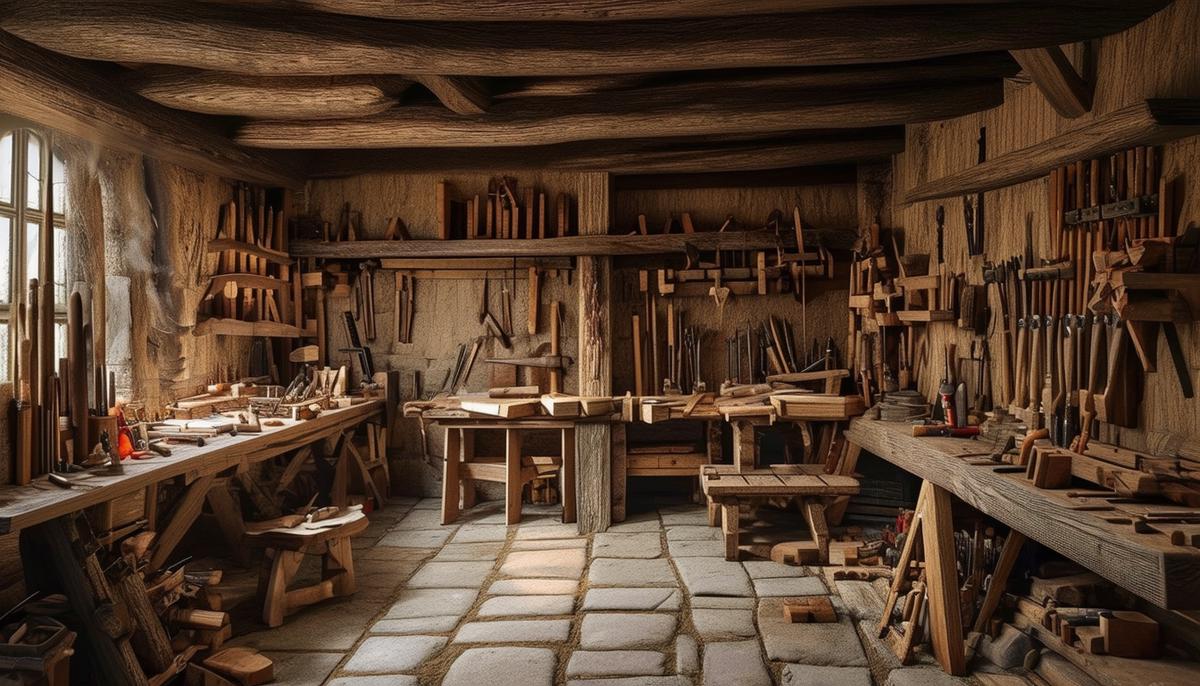
Woodworking in the Middle East
Woodworking in ancient Middle Eastern civilizations melded functionality with intricate beauty, reflecting cultural significance. Carved motifs adorned creations from ship hulls to delicate furniture, each piece a story of meticulous skill.
Shipbuilding harnessed timber's durability, with shipwrights shaping keels and ribs using adzes and axes, fastening planks with mortise and tenon joints for strength at sea. Furniture featured bone, ivory, and metal inlays, with compasses, wedges, and mallets shaping intricate designs.
Wood held sacred and mundane roles, from the Hebrew Tabernacle to mosque carvings imbued with spiritual symbolism. Ornate lattice windows played with light and shadow, enhancing aesthetic and spiritual experiences.
Lebanese cedar was revered for aromatic presence and spiritual connotations. Guilds and apprenticeships preserved knowledge as tools advanced from saws and axes to bow drills and lathes, enhancing artisans' abilities.
Middle Eastern woodwork transcended mere utility, infusing objects with a sublime connection between material and divine through exquisite craftsmanship.
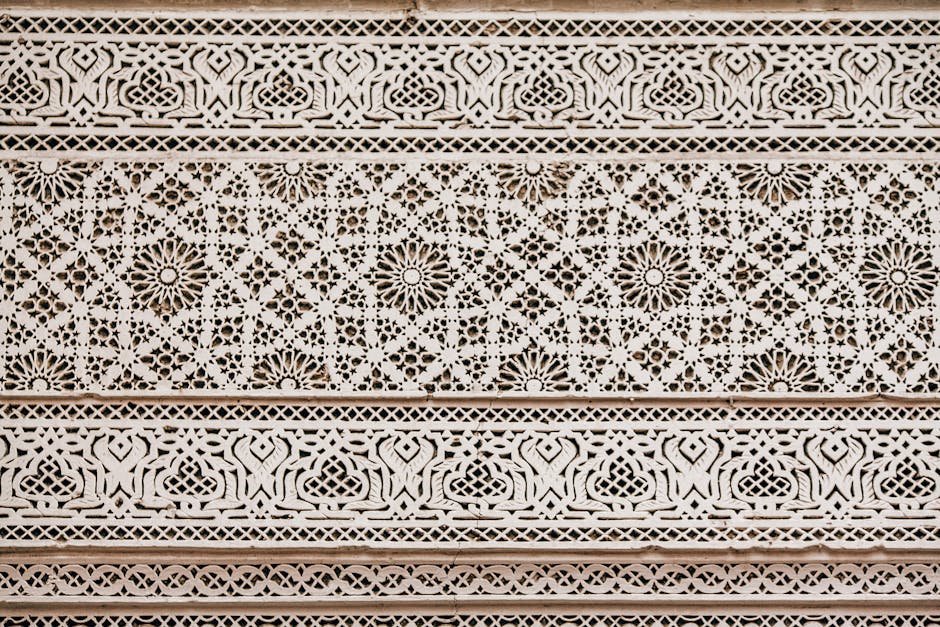
Japanese and Chinese Woodworking
Ancient Chinese and Japanese woodworking represent two distinct branches of this ancient craft, each imbued with unique cultural sensibilities, practices, and nuances. Both traditions offer intricate artistic expressions, deeply rooted in the history and philosophies of their respective cultures.
In ancient China, woodworking reached a sophisticated peak around 720 B.C., guided by luminaries like Lu Ban. Often considered the patron saint of Chinese builders and craftsmen, Lu Ban introduced essential tools such as the plane, chalk line, and the carpenter's square. His teachings were meticulously documented in the "Lu Ban Jing" (Manuscript of Lu Ban), outlining precise measurements and construction techniques for creating various objects.
Chinese woodworking emphasized geometry and precision. The elaborate joinery techniques employed, such as mortise and tenon, exemplify this focus. These joints, renowned for their strength and durability, required no nails or adhesives, relying on exact fitting and the natural properties of the wood. The joinery harmoniously blended engineering and art, where even the simplest connections were elegant structural solutions.
The practice of Feng Shui played a significant role in Chinese woodworking, ensuring wooden items and structures were positioned strategically to enhance well-being, health, and happiness. Feng Shui adhered to the belief that the orientation of objects could influence the flow of energy, guiding woodworkers to create spiritually aligned pieces.
Japanese woodworking, while maintaining rigorous craftsmanship, steered towards a different aesthetic and cultural ethos. Tools crafted from high-carbon steel, perfected through centuries, were instrumental in this evolution. The Japanese plane, known as "kanna," and the ultra-sharp chisels exemplified this technological prowess. Unlike Western planes, the kanna blade is pulled across the wood grain, allowing for more control and finer cuts, reflecting unique ergonomic principles.
Joinery in Japan elevated woodworking to a near-spiritual discipline. Japanese artisans perfected fitted joints that required no nails or glue, achieving astonishing levels of intricacy and strength. Techniques like the "kanawa-tsugi" (dovetail joint) and "Kigumi" (interlocking wood joinery) embodied the philosophy of "wabi-sabi," the appreciation of beauty in imperfection and transience. These meticulous joints reflected a deep respect for materials, honouring the life and spirit of the wood.
Lacquer work was another distinctive element of Japanese woodworking, involving applying multiple layers of sap-based lacquer to wooden objects, creating a durable and glossy finish that enhanced their natural beauty. Lacquer work served both decorative and protective purposes, elevating everyday objects into pieces of art.
Culturally, woodworking in Japan was deeply intertwined with Zen Buddhism, influencing not just the craftsmanship but the entire ethos of creation. The discipline required to master tools and techniques paralleled the meditative practices of Zen, where deliberate, thoughtful actions were central. This spiritual undercurrent manifested in the serene and harmonious designs that characterised Japanese furniture and architecture.
Ancient Chinese and Japanese woodworking reflect distinct cultural philosophies through their tools and techniques. Lu Ban's guides and the precise joinery techniques of China highlight a cerebral approach, emphasising geometry and spatial harmony. Japanese woodworking, with its sophisticated joinery, sharp tools, and spiritual dimensions, underscores a meditative, holistic crafting tradition.
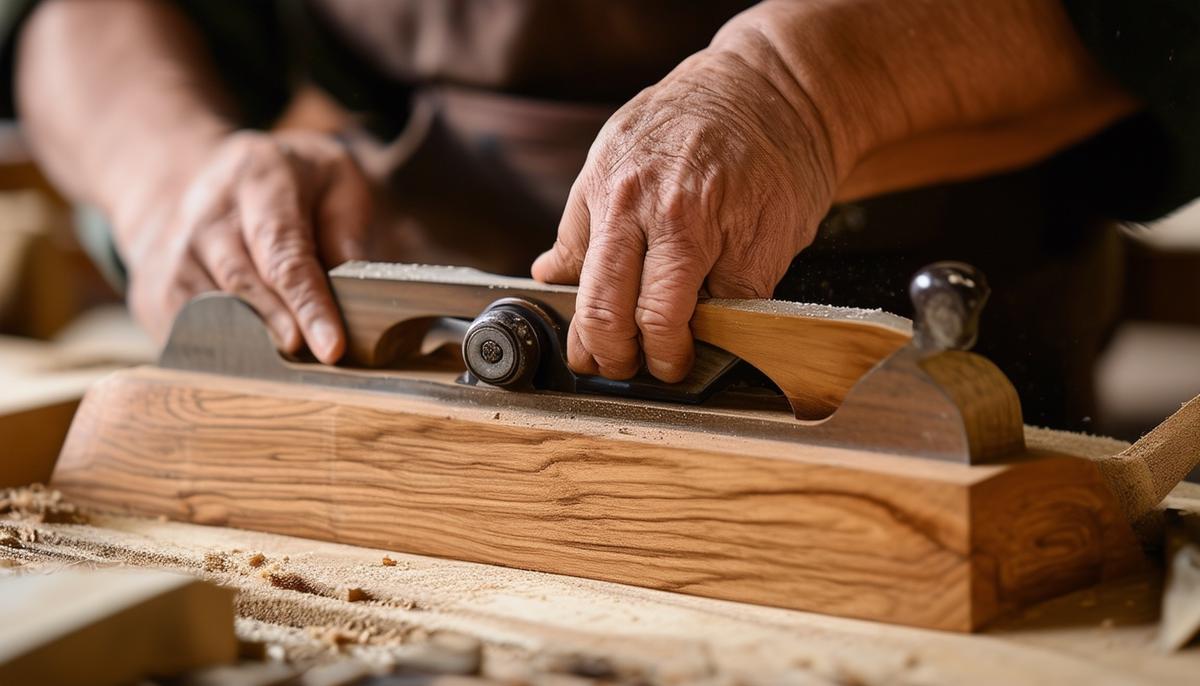
Leave a Reply